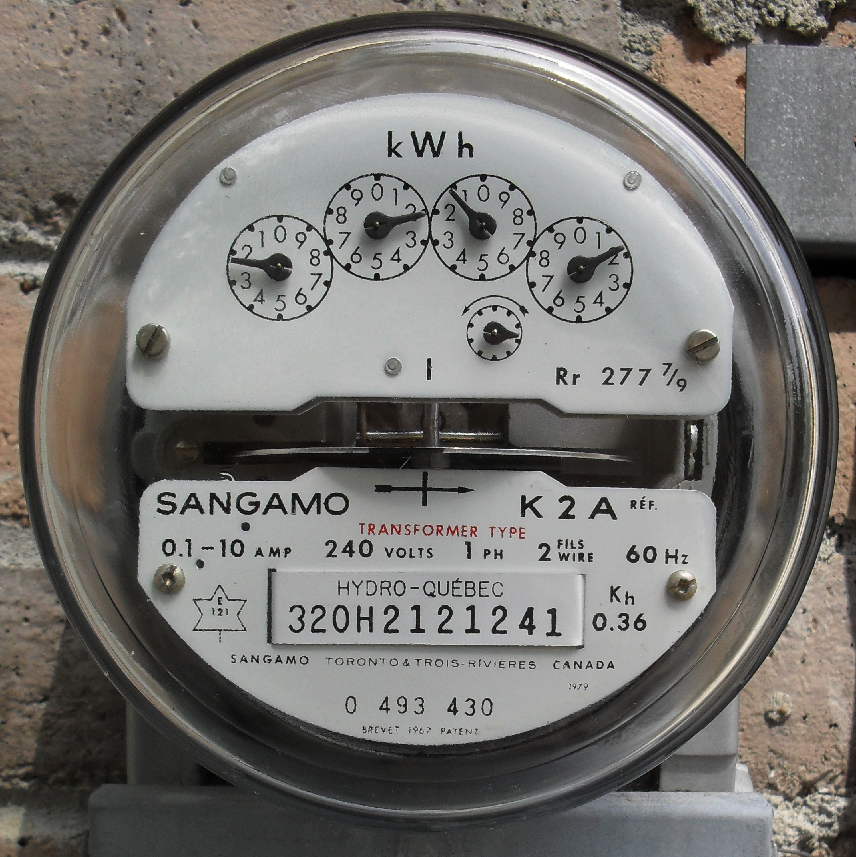Types of electricity meters
There are different types of electricity meters in the US. Here we explain the difference between them.
| Summary |
|---|
What does an electricity meter do?
A meter is a tool that constantly counts the electricity you have used in your home. It is much like the mileage display in your car that shows you the distance you have used. On a electricity meter, the actual number you read on the display is not very important. You must make 2 reading at 2 very specific moments of the day, week, month or year, and the difference between both readings will be the amount of electricity you have used between both moments. If your first meter reading is 46043, and the next one is 46053, then the amount of electricity you have used in the time between both readings is 46053 - 46043 = 10 kWh.
You may also want to write down your meter number. This number is printed under or next to your display, it does not change over time. Some utility companies or suppliers may require you to give them your meter number when signing up for service, signing out, or just managing your account.
Analog and digital meters
There are 2 main types of electricity meters:
- Analog meters: also called electromechanical meters. They have an analog display. They do not offer any connectivity.
- Digital meters: also called electric meters. They have a digital display (LCD or LED display), they offer connectivity and some instant functionalities.
The main difference is the display appearance, and the instant connectivity which can have various uses.

Analog electricity meter
Analog meters
Analog/Electromechanical meters are the more traditional meters. They use a physical process called electromagnetic induction to count the amount of electricity passing through the meter and display it on a set of clock-like circular scales.
Reading your analog meter

Reading an analog electricity meter can be tough.
Reading your analog meter may be challenging. There is a specific manner to do so. Record the numbers from the left (the 10,000 dial) to the right (1 kWh per div). When a dial hand points between two numbers, record the lower number. If the hand points exactly on the number, there are two possibilities:
- If the hand you are looking at is exactly on a number, and the next dial (the one on the next right) is on 9, then the number is actually one digit less. For example, in the image here, the 4th dial (the 10 kWh dial) hand is almost exactly on 7, and the next one is on 9. The actual value of the 4th dial is therefore 6 (and both dials together make 6.9, which is why the 4th hand was so close to the 7).
- On the contrary, the 2nd dial is on the number 0 and the next dial is on 2, so the number will be 0.2.
For more information on how to read your meter, please visit our Reading your Electricity Meter page.

Digital electricity meter
Digital meters
Digital electricity meters are rather simple to read. The display only shows digit on an LCD or LED screen, so there is no hand display. These meters will tell you the exact meter reading on the display, without any calculations required.
Most recent digital meters are also wireless. This means that meter reading can be done from a distance. The technicians who perform the meter readings will not have to disturb you, since they will be able to read your meter from the street, with a wireless connection device.
Time-of-use meters
Time-of-use meters can be either analog (with the hand dials) or digital. The difference is that time-of-use meters are used for people who are signed up with a time of use plan. A time of use plan is a plan where the electricity prices are different at different times of the day. Usually, you pay a more expensive rate during the day (peak hours), and a less expensive rate during the night (off-peak hours). Time-of-use meters will therefore include 2 seperate meters:
- One meter will count the electricity used during the peak hours.
- The other meter will count the electricity used during the off-peak hours.
On some digital time-of-use meters, there will be only one display, and you will have to press a button to see the meter readings of the peak and of the off-peak hours.